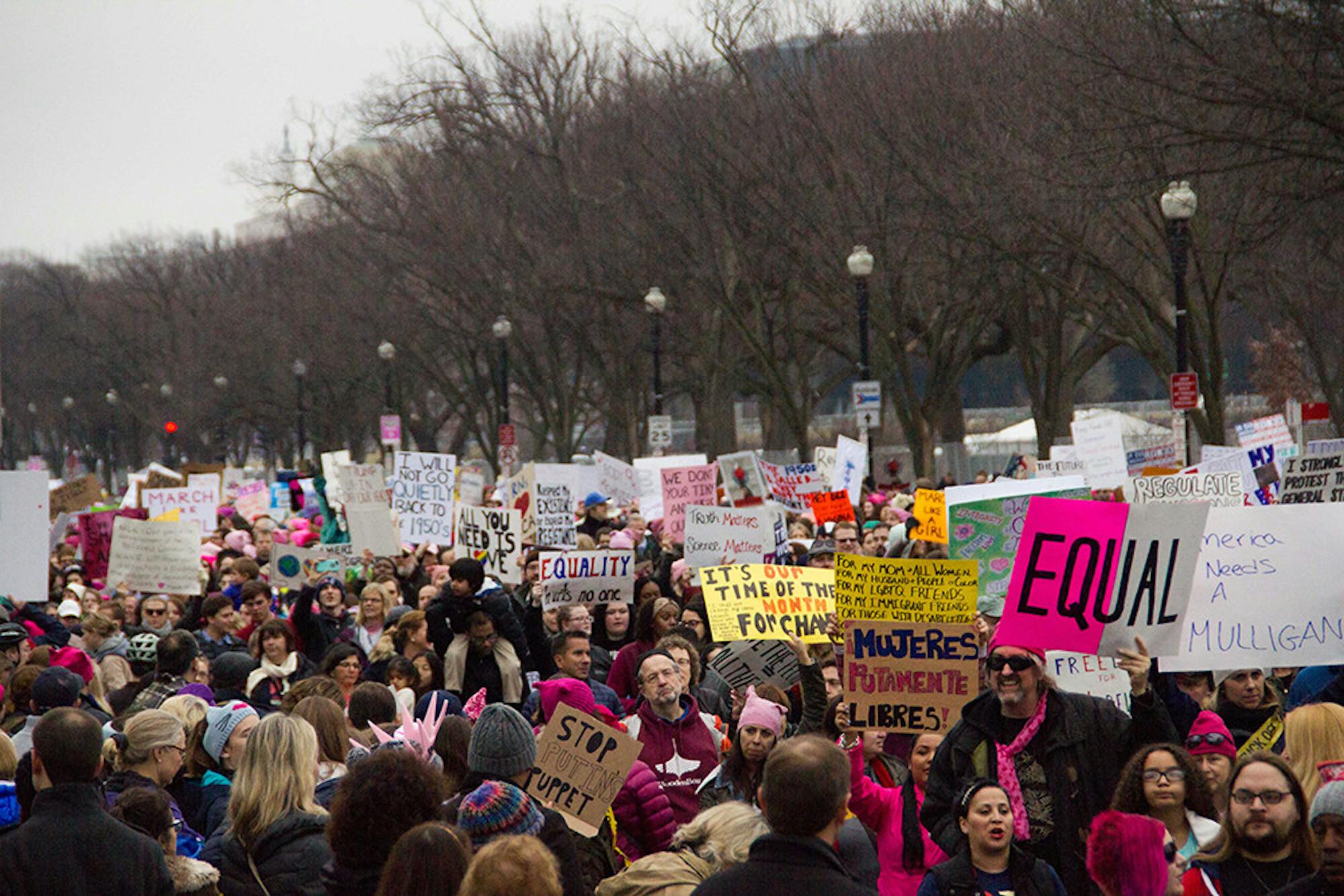Hundreds of thousands of people gathered in the nation's capital last Saturday to demonstrate against the administration of President Donald Trump, as part of the Women's March on Washington.
More than 500,000 people are believed to have attended the march inWashington, D.C., according to the Associated Press.More than 600 sister marches were held in other cities across the United States and around the world, the event organizers' website notes.
Most of the marchers were women and young girls, but men were among the demonstrators as well. The protesters filled city streets surrounding the National Mall from morning through the late afternoon. They brandished signs, wore buttons that read "nasty woman" and chanted slogans challenging the new president's legitimacy.
Many marchers said they were concerned about women's rights and human rights in general, which marchers warned could be under threat.
"If [Trump] does even one-tenth of all of the things he's said ... our country will go back decades in terms of fundamental human rights," D.C. resident Nick Phillipson said.
But the day after the inauguration, many of the protesters' immediate anger was directed toward Trump himself. Chants of "Not my president" echoed across the National Mall, and knitted pink "pussy hats" were spread throughout the crowds.
Feminist activist Gloria Steinem was one of many headline speakers who rallied the crowds before the march down the National Mall. She spoke about the need for women to use the march to stand apart from historical patriarchy.
“No more asking daddy. We are linked, we are not ranked and this is a day that will change us forever because we are together," Steinem said.
Filmmaker Michael Moore also had a prominent pre-march speaking role. He devoted his speech to rallying the crowds to action with a "to-do list." He then led the crowd in a memorization chant of the U.S. Congress' switchboard operator phone number.
"I want you to call Congress every single day," Moore said.
The common theme of the Women's March was its central goal to support women's issues under threat by the new administration. Nonetheless, women's rights were not all that pushed hundreds of thousands to flock to the streets, according to many protesters.
The environment was also on many minds during the march. One day earlier, the Trumpadministration had removed all climate change webpages from the official White House website, according to a New York Times article.
Karien Laurent, who was marching past the Lincoln Memorial on Saturday afternoon with a group of friends, said the environment was as much a concern for her over the next four years as were women's rights.
"I already thought that some of our environmental regulations weren't stringent enough," she said. "And now deregulation is on the horizon."
Sofia Adams (LA '16), a Utah native, was on hand for many of the protests on Friday and Saturday.
"I went with the goal of using my body in whatever way was the most useful to those who had organized protests," she said. "As one individual, our choices do not have a great impact, but together, our decisions and actions can be revolutionary.
However, Harper Hopkins, a Tufts student who was present at the march, expressed concern that some of the signs in the march were potentially exclusionary of transgender women.
“I saw a sign that said ‘no uterus, no opinion,’ the idea being that if you don’t have a uterus, subtext being you’re a man, then you shouldn’t have any say in the rights of people who do, subtext being women," Hopkins, a sophomore, said. "The issue with those is that they make an assumption about the breadth of womanhood."
One day prior to the Women's March, some of the protests had not been as peaceful. During the day of the inauguration, dozens of protesters dressed in all black with face masks ran through downtown Washington, D.C. breaking windows. Over 200 were arrested, according to the New York Times.
The violence continued on Friday afternoon, as groups of protesters on K street and 12th faced off with riot police. The protesters, some of whom wore gas masks and goggles, lobbed bricks and rocks at the police line. Whenever the protesters got close to the police's line of shields, officers threw stun grenades and tear gas to keep the crowd back.
Justin Schoville, who was registering voters for the Green Party, said that Friday's protest was far more chaotic than most.
"I've been to a lot of protests in D.C. They're usually really peaceful," Schoville said. "D.C. police are really calm, professional - they're very patient with protesters."
Robert Katz contributed reporting to this article.
Women's March caps days of D.C. protests against Donald Trump






